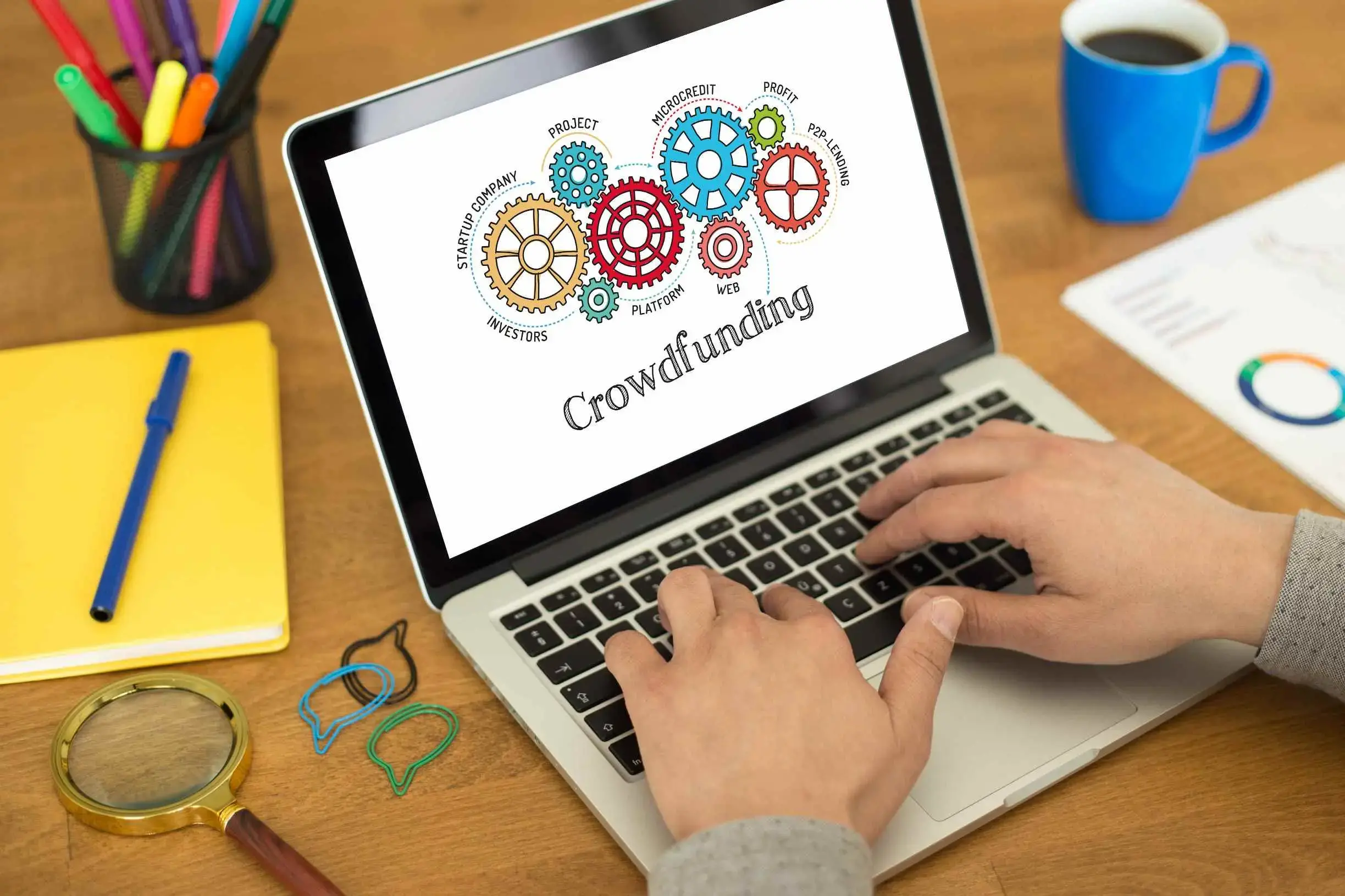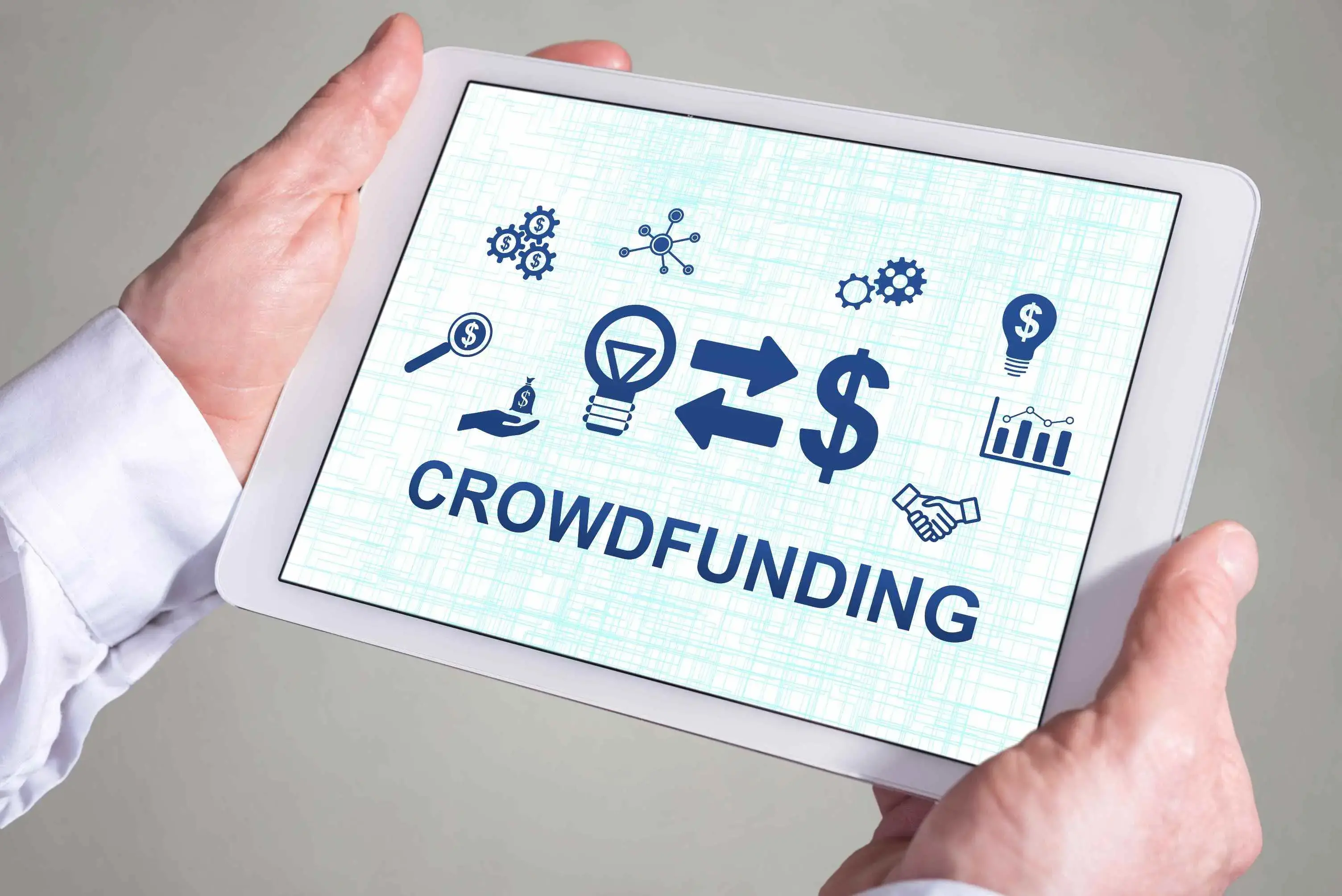Crowdfunding is a modern funding method that connects creators with backers. It has gained popularity for its inclusivity and direct support. Starting a crowdfunding campaign can be an exciting and rewarding way to raise funds for a project or cause.
This exploration defines crowdfunding, traces its rise, and examines its impact on various projects.
Brief Overview and Definition of Crowdfunding
Crowdfunding is a financing method that uses online platforms to gather small contributions from many individuals to fund a project. This democratises funding by providing creators with capital and validation from a broad audience.
Starting with ArtistShare in the early 2000s and followed by Kickstarter and Indiegogo in the mid-2000s, these platforms enabled global funding for diverse projects. GoFundMe diversified crowdfunding in the late 2000s, gaining global recognition with regulatory considerations by the mid-2010s.
Evolving with technology, crowdfunding shifted from community-driven to a sophisticated online model. Its impact spans creative arts, technology, social initiatives, and entrepreneurship, empowering creators struggling with traditional financing.
Crowdfunding plays a key role in launching innovative products, supporting independent films, funding charitable endeavours, and aiding small business growth. The direct connection between creators and backers fosters a sense of community and shared ownership in project success.
Understanding its significance in today’s funding landscapes is crucial for creators and supporters. Exploring its impact on various projects provides insights into crowdfunding's relevance as a funding method, shaping the future of entrepreneurship and creative endeavours.
Types of Crowdfunding
Crowdfunding has evolved into a dynamic and versatile funding method, offering various models tailored to different objectives and projects. Understanding the distinct types of crowdfunding, such as Rewards-based, Equity, and Donation-based, provides creators with a spectrum of options to bring their endeavours to fruition.
1. Rewards-based Crowdfunding
In this model, backers contribute funds to a project in exchange for tangible rewards or products, creating a tiered system where the rewards often escalate in value with the contribution level.
This approach is ideal for creative projects, product launches, and initiatives where backers seek a tangible return for their investment, as demonstrated by the Pebble Time smartwatch campaign on Kickstarter.
The campaign strategically planned by Pebble raised over $20 million, offering backers early access to the innovative timepiece, highlighting features, and providing exclusive rewards.
2. Equity Crowdfunding
Equity crowdfunding involves backers investing funds in a project in exchange for equity or ownership stakes in the venture, enabling them to become shareholders and share in the potential financial success of the project.
Suited for startups and businesses seeking capital infusion while engaging backers as stakeholders, this model was exemplified by the Oculus Rift virtual reality headset.
Oculus secured early funding through Kickstarter's equity crowdfunding, setting realistic goals and emphasising groundbreaking virtual reality technology, which attracted both small and large investors before being acquired by Facebook.
3. Donation-based Crowdfunding
In donation-based crowdfunding, backers contribute funds without expecting financial returns, making it an appropriate model for charitable causes, community projects, or personal endeavours, such as fundraising for medical expenses, disaster relief, and philanthropy.
The ALS Ice Bucket Challenge, a viral social media campaign, exemplified this model by raising funds for ALS research through donations. The ALS Association effectively defined its cause, creating a powerful narrative that motivated participants to contribute to ALS research.
How to Make a Crowdfunding Campaign Plan in 5 Easy Steps

Step 1: Define Your Project and Goals
- Clearly outline the purpose of your project, emphasising its unique aspects. Specify what you aim to achieve and determine the amount of funding required to realise your project.
Step 2: Choose the Right Platform
- Kickstarter is ideal for creative, innovative products and technology. Its funding model is all-or-nothing.
- Indiegogo is suitable for various project types, including charitable causes, with funding models offering both all-or-nothing and flexible options.
- GoFundMe is well-suited for personal causes, medical expenses, and community projects, featuring a flexible funding model.
Step 3: Create a Compelling Campaign Page
- Craft a concise, attention-grabbing title and tagline.
- Share the inspiration behind your project and the challenges you are addressing.
- Transparently outline the budget breakdown.
- Utilise high-quality images and graphics to represent your project visually.
- Clearly define backer rewards for different contribution levels.
Step 4: Promote Your Campaign
- Leverage platforms like Facebook, Instagram, Twitter, and LinkedIn for outreach.
- Send personalised emails to friends, family, and colleagues with a compelling call to action.
- Identify influencers or bloggers and collaborate to expand your reach.
Step 5: Engage with Your Backers
- Keep backers informed about campaign progress, milestones, and challenges.
- Address comments and messages promptly to build trust.
- Show appreciation with personalised thank-you messages and updates on the impact of their support.
This complete plan for a crowdfunding campaign covers everything from defining the project and choosing a platform to creating the campaign page, promoting it, and engaging with supporters.
By using smart communication strategies and different platforms, creators can connect with their audience, gather support, and bring their vision to life.
Post-Campaign Activities
After successfully concluding your crowdfunding campaign, upholding your commitments and maintaining a positive relationship with your backers is essential.
Stick to Your Promised Reward Delivery Timeline: Honour the expectations set during the campaign by delivering rewards within the timeframe communicated to backers.
Keep Backers Informed About Progress and Delays: Maintain transparent communication with backers. If there are any unexpected delays or challenges, promptly inform your supporters. Open and honest communication helps build trust.
Share the Impact of the Funds and Progress Made: Regularly update backers on the project's success and the tangible outcomes achieved with their contributions. Illustrate how their support has made a difference and emphasise the positive impact.
Tips for Crowdfunding Campaigns
Launching a successful crowdfunding campaign requires strategic planning and effective communication.
Utilise Social Media
- Use popular social media platforms like Facebook, Instagram, Twitter, and LinkedIn to create awareness.
- Share frequent updates, behind-the-scenes content, and interactive posts to keep your audience engaged.
Email Outreach
- Create and maintain an email list with contacts from your friends, family, and professional networks.
- Develop personalised and compelling email messages that convey your campaign's purpose and include a strong call to action.
Collaborate with Influencers
- Identify influencers or bloggers whose audience aligns with your project.
- Initiate collaborations with influencers to expand your campaign's reach and tap into their follower base.
Regular Updates
- Keep backers informed with regular updates on your campaign's progress.
- Share milestones achieved and any challenges you're overcoming, fostering a sense of shared accomplishment.
Responsive Communication
- Respond promptly to backers' comments, questions and messages.
- Establish trust and transparency through open communication, addressing concerns and questions promptly.
By integrating these tips into your crowdfunding strategy, you can maximise your campaign's visibility, engage with your audience effectively, and build a community of backers who are not only financially invested but emotionally invested in the success of your project.
Potential Risks and Challenges in Crowdfunding
- Funding Shortfalls: There's a risk of failing to reach the funding goal, which can be disappointing for the creator and backers.
- Project Delivery Delays: Creators may face challenges in delivering the promised product or service on time, leading to dissatisfaction among backers.
- Overcommitting on Rewards: Offering extensive or complex rewards might become challenging to fulfil, causing logistical issues.
- Market Saturation: In popular crowdfunding categories, campaigns might struggle to stand out among many similar projects.
- Intellectual Property Concerns: Sharing detailed project information may expose creators to intellectual property theft or replication.
- Backer Expectations: Managing expectations can be tricky, and backers may have varying interpretations of what constitutes project success.
Strategies for Mitigation
- Realistic Funding Goals: Set achievable funding goals based on thorough project cost assessments to minimise the risk of falling short.
- Transparent Communication: Communicate potential challenges, timelines, and any unexpected hiccups with backers to build trust.
- Simple and Feasible Rewards: Keep rewards simple and ensure they align with the project's scope to avoid overcommitting and delivery complications.
- Unique Value Proposition: Clearly articulate what makes your project unique to differentiate it in a crowded marketplace.
- IP Protection Measures: Implement measures to protect intellectual property, such as filing for patents or using non-disclosure agreements as appropriate.
- Regular Updates: Provide regular updates to backers on the project's progress, addressing any delays or changes promptly and transparently.
- Set Expectations Clearly: Clearly outline project expectations, potential risks, and possible challenges in the campaign description to manage backer expectations.
By proactively addressing these risks and challenges, crowdfunding creators can enhance the likelihood of a successful campaign while fostering trust and satisfaction among backers.
Regulatory Landscape in Crowdfunding

Navigating the regulatory landscape is crucial for crowdfunding creators to ensure legal compliance and build trust with backers.
Securities Regulations: Creators offering financial returns, such as equity or profit-sharing, may be subject to securities regulations. Compliance may involve registering the offering with relevant authorities or utilising exemptions available for crowdfunding campaigns.
Consumer Protection Laws: Regulations vary, but many countries apply consumer protection laws to crowdfunding campaigns. Creators must provide accurate information, fulfil promises, and address any potential product liability issues.
Tax Implications: Funds raised through crowdfunding may have tax implications for both creators and backers. Creators should be aware of tax obligations related to income generated through crowdfunding and communicate this information transparently to backers.
Anti-Money Laundering (AML) and Know Your Customer (KYC) Regulations: Some jurisdictions require compliance with AML and KYC regulations to prevent fraudulent activities. Creators may need to implement identity verification measures for backers, especially for larger contributions.
Advertising and Marketing Regulations: Campaigns must adhere to advertising standards and avoid deceptive or misleading practices. Creators should ensure that their marketing materials comply with relevant regulations to maintain transparency and trust.
Cross-Border Regulations: Crowdfunding campaigns with an international reach must navigate regulations in multiple jurisdictions. Creators should be aware of any cross-border implications, including tax considerations and compliance with local laws.
Crowdfunding Platforms' Compliance: Crowdfunding platforms often have their own set of rules and guidelines to ensure legal and ethical practices. Creators should familiarise themselves with the platform's terms of service and guidelines to ensure compliance.
Data Protection Regulations: Handling personal data is integral to crowdfunding campaigns, and creators must comply with data protection laws. Creators should implement measures to safeguard backers' personal information and adhere to relevant data protection regulations.
Disclosure Requirements: Some jurisdictions may require specific disclosures in crowdfunding campaigns, such as risks associated with the project. Creators should provide comprehensive and transparent information to backers to meet disclosure requirements.
Emerging Trends in Crowdfunding
The crowdfunding landscape is evolving, introducing innovative trends that shape the future of fundraising.
- Blockchain Integration: Increasing use of blockchain technology for transparency and security. Blockchain ensures secure transactions, transparent fund distribution and eliminates intermediaries, enhancing trust in the crowdfunding process.
- Decentralised Finance (DeFi): DeFi leverages blockchain to create decentralised financial systems, giving backers more control over their funds and increasing financial inclusivity.
- NFT Crowdfunding: NFTs enable creators to tokenize digital content, offering backers ownership of exclusive digital assets and contributing to the digital collectibles market.
- Community-Centric Platforms: Emphasis on community engagement fosters a sense of belonging, encouraging backers to become advocates for projects and creators.
- Equity Crowdfunding for Mainstream Investors: Regulatory changes in various jurisdictions have expanded the pool of potential investors, democratising access to equity-based crowdfunding opportunities.
- Tokenization of Assets: Tokenizing assets provides backers with fractional ownership, making investing in traditional illiquid assets easier.
- Smart Contracts and Automation: Smart contracts streamline milestone-based funding distribution and enhance campaign management efficiency
- Environmental, Social, and Governance (ESG) Crowdfunding: Backers prioritise projects aligned with environmental sustainability, social responsibility, and good governance, reflecting a growing awareness of ethical considerations.
- Predictive Analytics for Campaign Success: Creators leverage data-driven insights to optimise campaign strategies, predict success factors, and refine their approach.
- Integration of Virtual Reality (VR) and Augmented Reality (AR): VR/AR enhances the storytelling aspect of campaigns, allowing backers to experience projects more immersively and engagingly.
Keeping abreast of these trends allows both creators and backers to adapt to the evolving crowdfunding landscape, fostering innovation and expanding the possibilities of collaborative funding.
Conclusion
Starting a crowdfunding campaign is an exciting project that needs careful planning, open communication, and the ability to change as needed. Your chances of success are high if you clearly define your project, pick the right site, and engage with your community.
If you know the differences between the different crowdfunding methods, you can pick the one that best fits your goals. As you start your crowdfunding journey, keep up with changes in the industry, think outside the box, and use the support of a global community.
Remember that the ever-changing crowdfunding environment offers limitless opportunities for making your ideas a reality. Best of luck on your crowdfunding journey!
Frequently Asked Questions
Is crowdfunding only for startups and entrepreneurs, or can individuals use it for personal needs?
Crowdfunding is versatile and can be used by individuals for personal needs, such as medical expenses, education, or community projects. While it is commonly associated with startups and entrepreneurs, individuals can leverage crowdfunding to seek financial support for various personal endeavours.
What was the first example of crowdfunding?
One of the earliest examples of crowdfunding dates back to 1997, when the rock band Marillion funded their U.S. tour through online donations from fans. This marked a pioneering instance of using the internet to gather financial support from a wide audience.
Can I run multiple crowdfunding campaigns for different projects simultaneously?
Yes, it is possible to run multiple crowdfunding campaigns simultaneously, but it requires careful planning. Ensure each campaign has a distinct audience and clear messaging and do not create confusion.
What happens after my crowdfunding campaign ends?
After your crowdfunding campaign ends, the platform will process the funds collected, and you will receive the amount minus any platform fees within a designated time frame. It is essential to fulfil any promises made to backers, provide updates on the project's progress, and maintain communication to keep them informed.
How do I learn from my crowdfunding experience for future projects?
To learn from your crowdfunding experience for future projects, analyse the campaign's performance, identify successful strategies, and gather feedback from backers. Use these insights to refine your approach, set realistic goals, and improve communication in your upcoming projects.
Are there specific types of projects that are more successful in crowdfunding?
Crowdfunding is diverse, but creative projects, innovative products, and charitable causes often find success.
Can I use crowdfunding for non-profit or charitable initiatives?
Absolutely. Crowdfunding is an effective tool for fundraising for non-profit or charitable causes.
Can I run a second crowdfunding campaign after a successful one?
Yes, but careful planning is necessary, ensuring each campaign has a distinct audience and messaging to avoid confusion.
Can I use crowdfunding for equity in my business venture?
Yes, equity crowdfunding allows backers to invest in a project in exchange for ownership stakes in the venture.
What is the difference between flexible and all-or-nothing funding models?
Flexible allows creators to keep funds even if they don't reach the goal, while all-or-nothing requires reaching the goal for funds to be received.
What types of projects are considered unconventional for crowdfunding?
Crowdfunding is versatile; unconventional projects may include art installations, scientific research, or unique personal endeavours.
Are there alternative crowdfunding platforms beyond the well-known ones?
Yes, there are alternative platforms like Crowdcube, SeedInvest, and Patreon, each with unique features suited to different project types.
How can I make my campaign stand out in a competitive crowdfunding landscape?
Highlight the unique aspects of your project, use engaging visuals, and leverage storytelling to make your campaign memorable.

Yetunde Salami is a seasoned technical writer with expertise in the hosting industry. With 8 years of experience in the field, she has a deep understanding of complex technical concepts and the ability to communicate them clearly and concisely to a wide range of audiences. At Verpex Hosting, she is responsible for writing blog posts, knowledgebase articles, and other resources that help customers understand and use the company's products and services. When she is not writing, Yetunde is an avid reader of romance novels and enjoys fine dining.
View all posts by Yetunde Salami



















